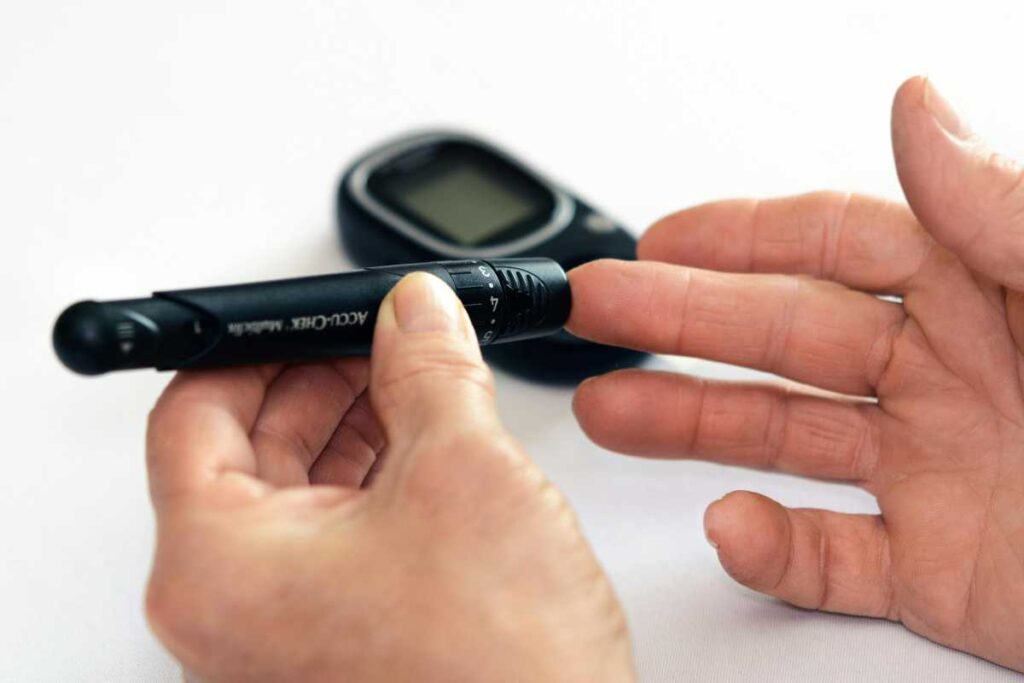High blood sugar, or hyperglycemia, is a common concern for individuals with diabetes and those at risk of developing the condition. Managing blood sugar levels is crucial for preventing long-term complications such as heart disease, kidney damage, and vision problems. Fortunately, there are numerous strategies to help lower blood sugar effectively. In this blog, we’ll delve deeper into practical ways to manage blood sugar through diet, lifestyle changes, and monitoring strategies.
Understanding Blood Sugar

Blood sugar, or glucose, serves as the primary source of energy for your body. It is derived from the foods you consume, especially carbohydrates. When you eat, your body breaks down carbohydrates into glucose, which then enters your bloodstream. Insulin, a hormone produced by the pancreas, facilitates the uptake of glucose into your cells for energy or storage. When blood sugar levels rise excessively, it can lead to symptoms such as fatigue, increased thirst, frequent urination, blurred vision, and headaches.
Blood Sugar Levels: What Is Considered Normal?
Understanding normal blood sugar levels is essential for managing health. The American Diabetes Association (ADA) provides the following guidelines for blood sugar levels:
- Fasting (no food for at least 8 hours): Less than 100 mg/dL is considered normal; 100-125 mg/dL is prediabetes; 126 mg/dL or higher indicates diabetes.
- 2 hours after eating: Less than 140 mg/dL is normal; 140-199 mg/dL is prediabetes; 200 mg/dL or higher indicates diabetes.
Effective Strategies to Lower Blood Sugar
1. Monitor Your Blood Sugar Levels
Regular monitoring of blood sugar levels is crucial for understanding how your body responds to different foods, activities, and stressors. Keep a log of your readings, noting the times you test, your diet, and any physical activities. This information can help you identify patterns and make necessary adjustments. Continuous glucose monitors (CGMs) are also available and provide real-time feedback on blood sugar levels, making it easier to manage fluctuations.
2. Adopt a Balanced Diet
Eating a well-balanced diet is foundational to blood sugar management. Focus on incorporating the following elements into your meals:
- Whole Grains: Replace refined grains (white rice, white bread) with whole grains (brown rice, quinoa, whole grain bread). Whole grains have a lower glycemic index (GI), meaning they raise blood sugar more slowly compared to refined grains. This helps maintain stable energy levels.
- Fruits and Vegetables: Prioritize non-starchy vegetables (e.g., leafy greens, broccoli, and peppers) and opt for fruits with a low glycemic index, such as berries, cherries, and apples. These foods are high in fiber, vitamins, and minerals and are lower in calories.
- Lean Proteins: Include sources of lean protein, such as chicken, turkey, fish, beans, lentils, and tofu, in your meals. Protein helps stabilize blood sugar levels by slowing down the digestion and absorption of carbohydrates.
- Healthy Fats: Incorporate sources of healthy fats like avocados, nuts, seeds, and olive oil. Healthy fats not only help you feel full but also improve insulin sensitivity, which can benefit blood sugar control.
3. Control Portion Sizes
Controlling portion sizes is a vital strategy for managing blood sugar levels. Even healthy foods can lead to spikes in blood sugar if consumed in excess. Consider the following tips for portion control:
- Use Smaller Plates: Smaller plates can help reduce portion sizes, making it easier to eat less without feeling deprived.
- Measure Portions: Use measuring cups or a food scale to measure portions, especially for high-carb foods like rice, pasta, and bread.
- Practice Mindful Eating: Take time to savor your meals. Eating slowly allows your body to recognize fullness cues, reducing the likelihood of overeating.
4. Stay Hydrated
Staying hydrated is essential for overall health and can aid in blood sugar management. Proper hydration helps your kidneys flush out excess sugar through urine. Aim for at least 8-10 cups (64-80 ounces) of water daily, and consider the following tips:
- Infuse Your Water: Add slices of lemon, cucumber, or mint leaves to your water for flavor without added sugars.
- Limit Sugary Drinks: Avoid beverages high in sugar, such as soda and sweetened teas, which can cause rapid spikes in blood sugar.
5. Exercise Regularly

Physical activity is one of the most effective ways to lower blood sugar levels. Exercise helps your muscles use glucose for energy, improving insulin sensitivity. Consider the following recommendations for incorporating exercise into your routine:
- Aerobic Exercise: Aim for at least 150 minutes of moderate-intensity aerobic activity per week, such as brisk walking, cycling, or swimming. Activities like dancing or gardening can also count.
- Strength Training: Incorporate strength training exercises at least twice a week. Building muscle mass increases your resting metabolic rate, leading to improved glucose uptake.
- Incorporate Movement Throughout the Day: Find opportunities to move, such as taking the stairs, walking during breaks, or doing household chores.
6. Manage Stress
Chronic stress can lead to elevated blood sugar levels due to the release of stress hormones like cortisol and adrenaline. Managing stress is essential for overall health and blood sugar control. Here are some techniques to help reduce stress:
- Mindfulness and Meditation: Spend a few minutes each day practicing mindfulness or meditation. Apps like Headspace and Calm offer guided sessions to help you get started.
- Yoga or Tai Chi: These practices combine movement with relaxation and mindfulness, helping to lower stress levels while promoting physical fitness.
- Breathing Exercises: Practice deep breathing exercises or progressive muscle relaxation techniques to help calm your mind and body.
7. Get Enough Sleep
Quality sleep is essential for maintaining healthy blood sugar levels. Poor sleep can disrupt hormones that regulate appetite and metabolism. Aim for 7-9 hours of quality sleep each night by implementing the following strategies:
- Establish a Sleep Routine: Go to bed and wake up at the same time each day to regulate your body’s internal clock.
- Create a Sleep-Friendly Environment: Keep your bedroom cool, dark, and quiet to promote better sleep. Consider using blackout curtains or white noise machines if necessary.
- Limit Screen Time: Reduce exposure to screens (phones, tablets, TVs) at least one hour before bedtime, as blue light can interfere with melatonin production and disrupt sleep patterns.
8. Limit Processed Foods and Sugary Drinks
Reducing your intake of processed foods, sugary snacks, and beverages is essential for managing blood sugar levels. These foods can cause rapid spikes in blood sugar, leading to increased cravings and energy crashes. Instead, focus on whole, unprocessed foods:
- Read Labels: Check nutrition labels for hidden sugars in processed foods and opt for products with fewer ingredients.
- Choose Snacks Wisely: Instead of chips or candy, opt for healthy snacks like raw vegetables with hummus, nuts, or yogurt with fruit.
9. Consider Supplements Wisely
Certain dietary supplements may support healthy blood sugar levels. However, it’s essential to consult with a healthcare professional before starting any supplements, as they may interact with medications or not be appropriate for everyone. Some supplements to consider include:
- Chromium: This mineral may improve insulin sensitivity and blood sugar control.
- Magnesium: Adequate magnesium levels are associated with better insulin sensitivity and glucose metabolism.
- Berberine: A compound found in various plants, berberine may help lower blood sugar levels and improve lipid profiles.
10. Consult a Healthcare Professional
If you’re struggling to manage your blood sugar levels, consider seeking guidance from a registered dietitian or healthcare provider. They can help you develop a personalized plan that considers your unique needs, preferences, and health goals. They can also provide support, resources, and accountability as you work toward managing your blood sugar effectively.
Conclusion
Managing blood sugar levels is vital for overall health and well-being, particularly for individuals at risk of diabetes or those already diagnosed with the condition. By adopting a balanced diet, staying active, managing stress, and monitoring your levels, you can take significant steps toward lowering your blood sugar. Always consult with a healthcare professional before making significant changes to your diet or lifestyle, especially if you have existing health conditions. With commitment and the right strategies, you can achieve better blood sugar control and enhance your quality of life.
